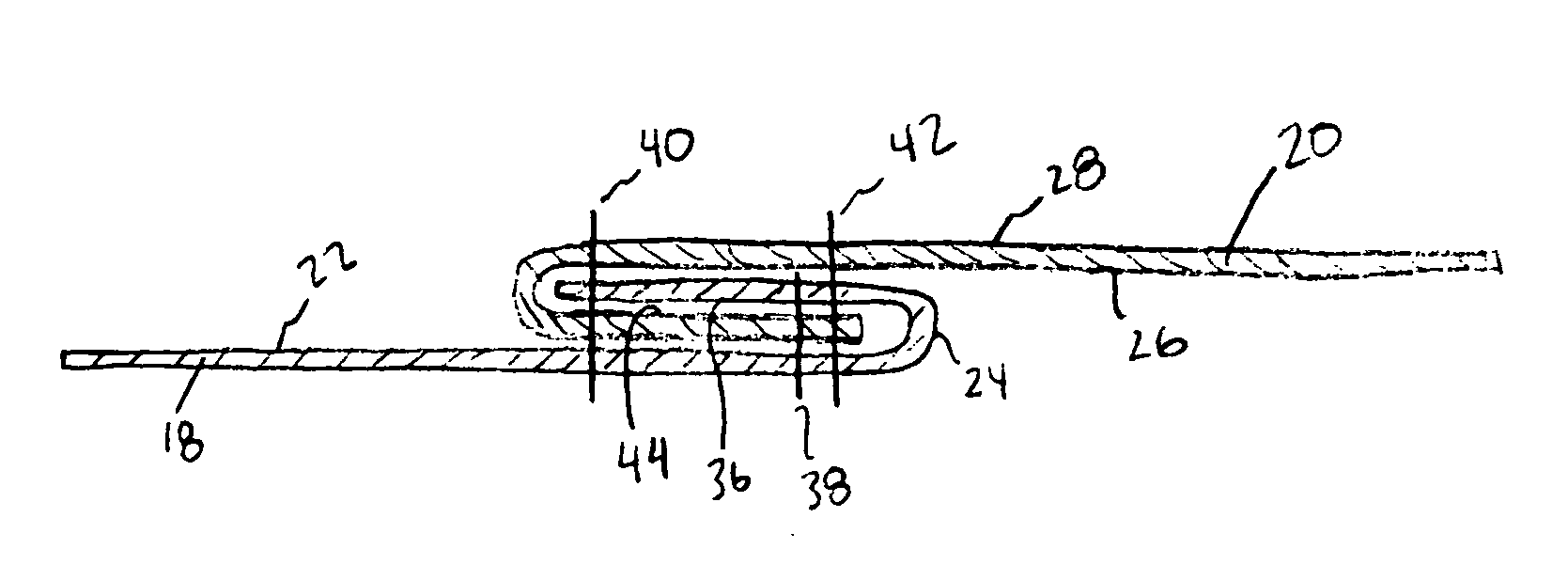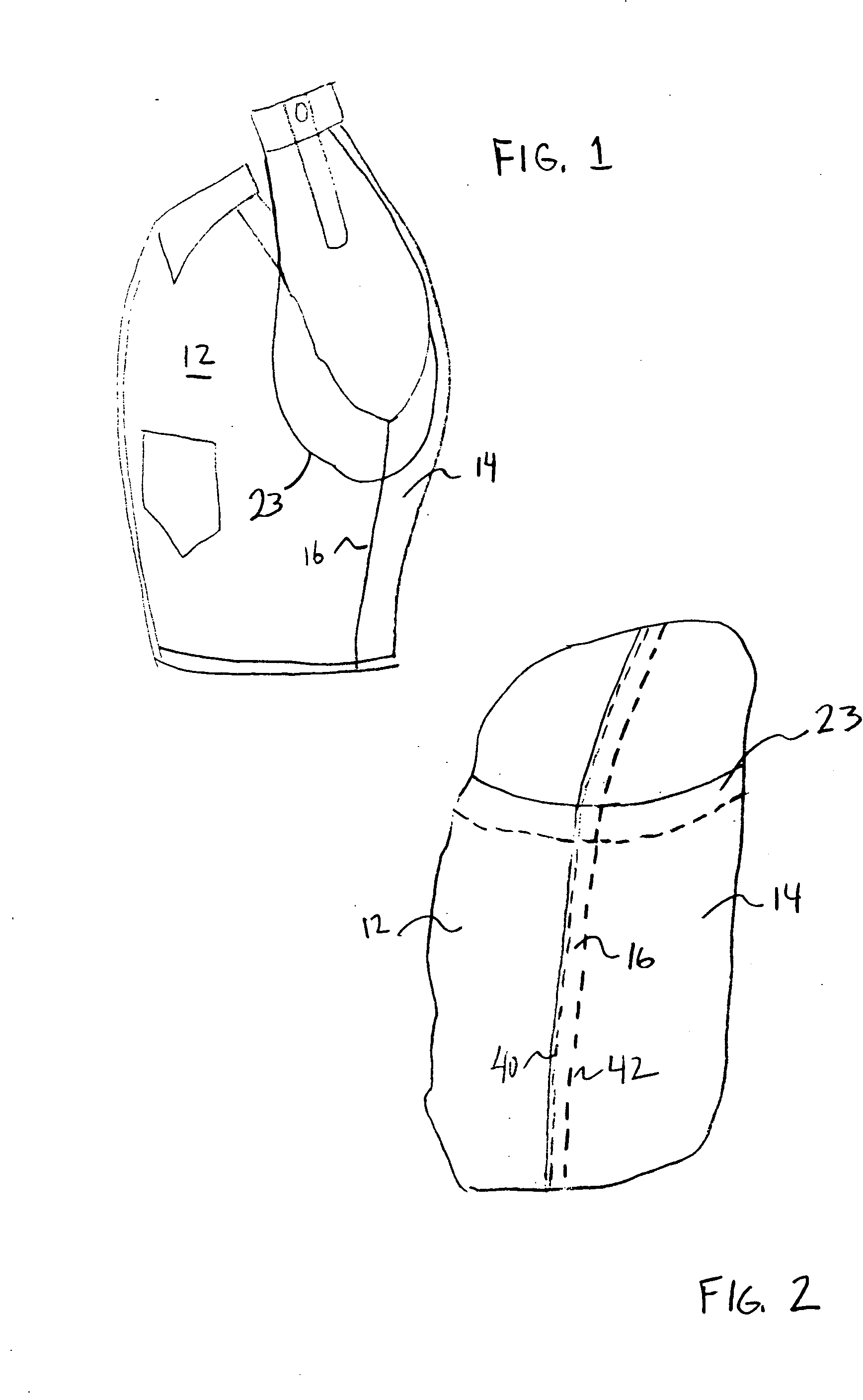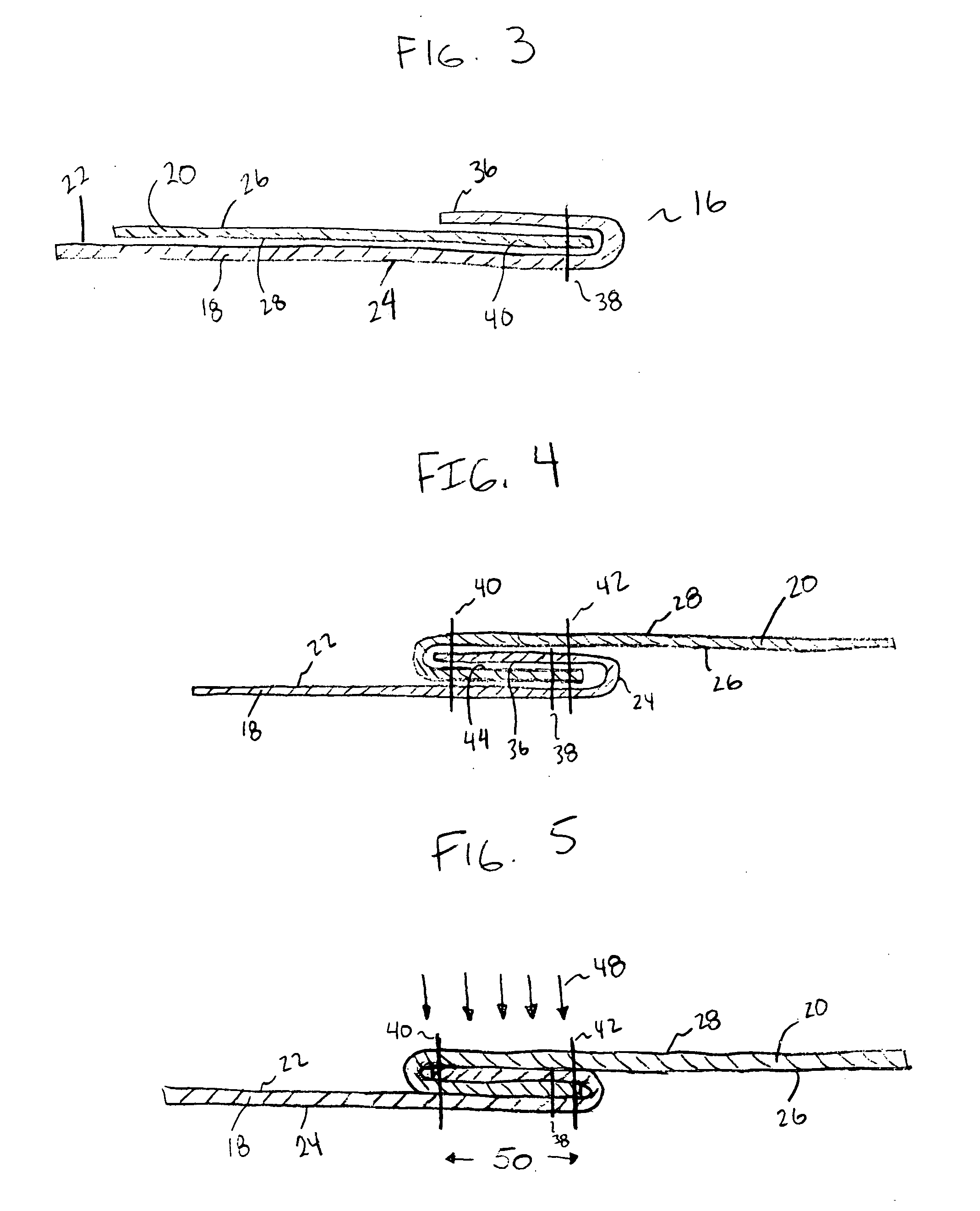Sewing method to increase seam strength
- Summary
- Abstract
- Description
- Claims
- Application Information
AI Technical Summary
Benefits of technology
Problems solved by technology
Method used
Image
Examples
Embodiment Construction
[0017] The term “fiber” as used herein refers to a fundamental component used in the assembly of yarns and fabrics. Generally, a fiber is a component which has a length dimension which is much greater than its diameter or width. This term includes ribbon, strip, staple, and other forms of chopped, cut or discontinuous fiber and the like having a regular or irregular cross section. “Fiber” also includes a plurality of any one of the above or a combination of the above.
[0018] The term “filament” as used herein refers to a fiber of indefinite or extreme length such as found naturally in silk. This term also refers to manufactured fibers produced by, among other things, extrusion processes. Individual filaments making up a fiber may have any one of a variety of cross sections to include round, serrated or crenular, bean-shaped or others.
[0019] The term “yarn,” as used herein refers to a continuous single ply or strand of textile fibers, filaments or material that can be used to form m...
PUM
 Login to View More
Login to View More Abstract
Description
Claims
Application Information
 Login to View More
Login to View More - R&D
- Intellectual Property
- Life Sciences
- Materials
- Tech Scout
- Unparalleled Data Quality
- Higher Quality Content
- 60% Fewer Hallucinations
Browse by: Latest US Patents, China's latest patents, Technical Efficacy Thesaurus, Application Domain, Technology Topic, Popular Technical Reports.
© 2025 PatSnap. All rights reserved.Legal|Privacy policy|Modern Slavery Act Transparency Statement|Sitemap|About US| Contact US: help@patsnap.com



